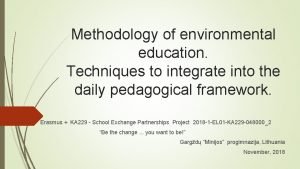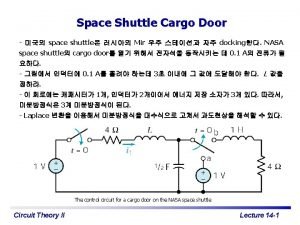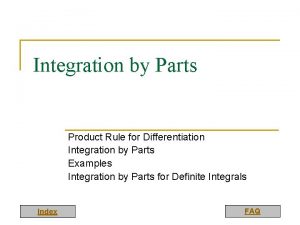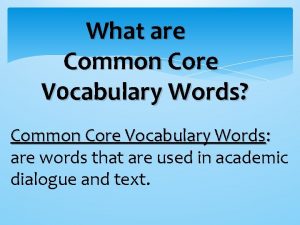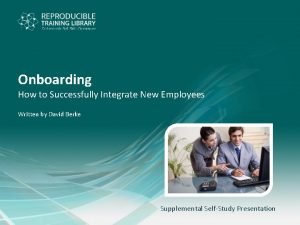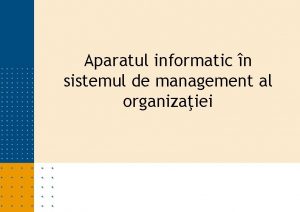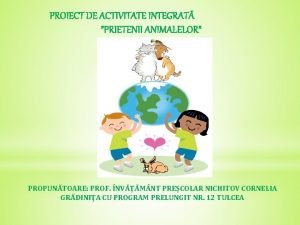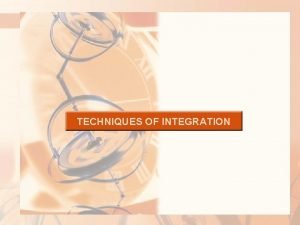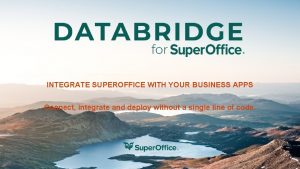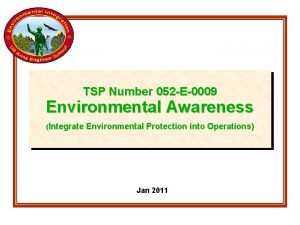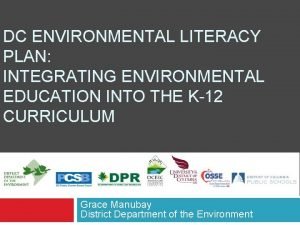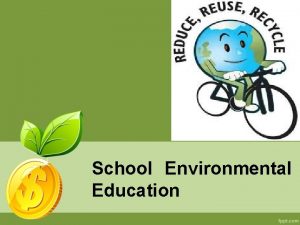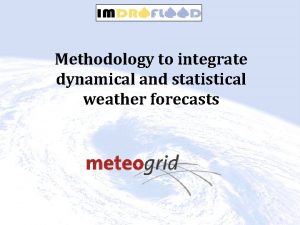Methodology of environmental education Techniques to integrate into











- Slides: 11

Methodology of environmental education. Techniques to integrate into the daily pedagogical framework. Erasmus + KA 229 - School Exchange Partnerships Project 2018 -1 -EL 01 -KA 229 -048000_2 “Be the change. . . you want to be!” Gargždų “Minijos” progimnazija, Lithuania November, 2018

Environmental education may be viewed to be an example of cross-curricular or integrated learning. Our children, need the knowledge and skills to understand the problems we are facing, and to be able to make decisions and take actions to resolve them. We want our students to become environmentally responsible. It might be integrated in one school subject ( e. g. biology). Integration between several school subjects ( e. g. biology, chemistry, physics, geography. ) Studies in geography, history, technology, and other arts and sciences can help students develop awareness of diverse cultural perceptions and interpretations of the environment. Exploring and addressing global issues, such as air, water pollution, endangered species, deforestation, saving energy, overconsumption, food production, and transportation are essential to establishing a sustainable society.


Environmental education as a tool for interdisciplinary teaching across the curricular We are sure- it is vital that from an early age, children acquire a good knowlwedge and understanding of their surroundings and the natural resources. Only then children will gain respect for the environment and desire to ta take care of it. This is the key to a sustainable future. At a young age education should be experimental, interactive and creative in order to stimulate interest in and excitment about learning.

An interactive, learner-centred and action-oriented pedagogy The environmental studies should be a child- centred approach that allows the child to interact with the environment Providing the children with opportunities to observe the local environmental features, issues, phenomena and changes in the community and also different living organisms. Conducting oral discussions with the children about the social and physical aspects of the environment Organizing out-of-class activities for real experiences in the local environmental areas like (parks, lakes, rivers , ponds, zoos) Guiding children in conducting simple outdoor projects that is connected to the environmental management, problems and sustainability

What our students are involved in Bird Feeder Students create an all natural bird feeder to hang near the school to feed birds during the various seasons. Window Garden Students plan, experiment, and observe as seeds grow in a window garden. Students explore why this is important to the sustainability of our environment. Animal Homes Near and Far Students work in cooperative groups to list animal habitats. They conclude the lesson by selecting one of the habitats and writing about some of its characteristics and listing a few animals that live in that environment. Reduce, Reuse, Recycle Students will watch a video about reduce, reuse, and recycle and then complete a gallery walk to discuss ideas of other ways to reduce, reuse, and recycle. Energy from wind power Making a paper windmill. Pictures with plants Making the picture using tiny flowers, seeds, grass or fern fronds or leaves. Mindmaps Working on the mindmaps to review the information from the whole lesson and identify the results of different environmental problems. They should record the information under the headings, description, predictions and solutions.

Learning outcomes Working collaboratively Competencies of critical thinking, systems thinking Creativity and innovation Taking responsibility

Learning content: Investigating topics from an interdisciplinary perspective Nature can be a great teaching tool to deepen children‘s understanding of science, mathematics, language, arts and social studies Students should work collaboratively on group assignments, solve real-life problems , go on excursions or discuss problems in small group seminars. The teacher is more a facilitator, rather than a knowledge provider. The student is much more active and responsible, rather than being a passive recipient of knowledge.

My very personal contribution to environmental and climate protection, no matter how small, can achieve a significant effect together with the contribution of all other active people.

How to Help Save the Environment. Tips that we give to our students Method 1 Saving Energy and Electricity Turn off electric items when they are not in use to save energy. A good rule of thumb is that if you aren’t using it, turn it off. Method 2 Conserving Water Spend less time in the shower Taking 5 -minute showers or only filling the bathtub one-quarter to one-third of the way full. Turn off the tap when you brush your teeth – this can save 6 litres of water per minute Method 3 Reducing, Reusing, Recycling Don't buy what you don’t need. Buy for durability. For items you do buy, look for things which will last a lifetime. Donate your old household items so someone else can reuse them. Don’t just throw your old stuff in the trash. Aim to recycle as much glass, metal, plastic, and paper as you can. Method 4 Changing Your Eating Habits Try eating less meat and dairy to help the environment. Domestic meat and dairy production requires a lot of natural resources. Eating less meat and dairy, and more plants, is one way you may be able to help the environment, and stay healthy yourself

To sum up Education about, in and for the environment provides students with opportunities to learn about the functioning of natural systems, to identify their beliefs and opinions, consider a range of views, and ultimately make informed and responsible choices for themselves, their families and communities. In the ecological view, students may come to know and understand more deeply that all human environments, societies, or cultures are all deeply dependent on natural systems, both for their development and, ultimately, their survival
